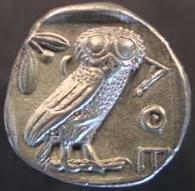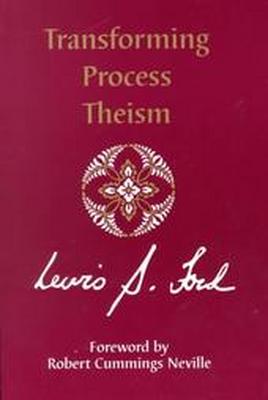
AnthonyFlood.com
Panentheism. Revisionism. Anarchocapitalism.


From The Journal of Religion, Vol. 46, No. 4. (Oct. 1966) 500-502. A review of A Key to Whitehead’s Process and Reality, edited by Donald W. Sherburne, New York: Macmillan Co., 1966. Pp. 263.
A Review of
Donald W. Sherburne,
A Key to Whitehead's Process and Reality
Lewis S. Ford
In more whimsical moments I have often wondered what a well-trained biblical scholar in source criticism would make of Whitehead’s published writings. Let us suppose he were handed an untitled copy of Science and the Modern World and deprived of all independent knowledge of its authorship. I feel sure our scholar would declare the work to be a compilation from two separate sources, H, a broadly educated and genial historian of ideas, and M, a highly technical systematic metaphysician. Those chapters on “Abstraction” and “God” are clearly from M’s hand, as well as the concluding three or four paragraphs from most of the latter chapters. Religion in the Making likewise appears to be a compilation: chapters i, ii, and iv by H, while M contributed chapter iii. Adventures of Ideas would be even more complex: H supplied Part I and quite possibly Part II; M is definitely the author of Part III, while those lyrical reflections in Part IV on truth, beauty, adventure, and peace must be by yet a third hand, P, a late source that enjoyed the opportunity to reflect upon the work of the metaphysician and a source that bears strong affinities to Modes of Thought.
This veritable quarry for source analysis, alas, seems unyielding to the aspiring student who would penetrate to the core of Whitehead’s thought. Whitehead’s fascinating reflections on science, religion, and civilization (the work of H) are readily accessible, but they furnish very few clues as to the character of Whitehead’s fully developed metaphysics, while the work of M in these volumes is too fragmentary and abrupt to provide much of an overview, and the post-metaphysical reflections of P seem always to presuppose that central metaphysical core our student has sought in vain to master. There is no alternative but to turn to Process and Reality, not just because this is Whitehead’s magnum opus, but because this is the only work in which his systematic metaphysical ideas are spelled out with any measure of completeness.
Process and Reality, in turn, is hardly designed with an eye toward pedagogical facility. If the initial chapter on speculative philosophy has the warmth and vitality of Genesis, surely the second chapter on the categorial scheme has plunged us directly into the barren wastes of Leviticus, and Part II is as disordered as the writings of the prophets. Part III is much more manageable, provided we have the fortitude to have survived to that point, or the good fortune of being warned beforehand. Skipping Part IV, which none but the most hardy Whiteheadians ever traverses, we reach the golden land of Part V on God and the world. Exclusive attention to Part V, however, may be even more disastrous than our crypto-Marcionite habit of reading the New Testament without reference to the Old. Fortunately, Sherburne’s Key has changed all this. By drastically rearranging an abridged text of Process and Reality (approximately two-fifths of the original). Sherburne has provided us with a very manageable introduction to the central metaphysical principles expressed in Whitehead’s own words. The Key renders Process and Reality pedagogically accessible for the first time, as a quick enumeration of its contents will readily make apparent.
The first two chapters introduce the basic concepts. The first chapter on the actual entity ushers us into the “subjective” world of concrescence, prehension, and subjective form. Students on whom I tested this material found this chapter the one they had to read at the slowest rate. Many new ideas were being introduced in a condensed and rapid fashion, but the material was quite intelligible once mastered. Clearly Sherburne experienced difficulties in finding suitable elementary material on the actual entity. All the same I question the advisability of introducing the distinction between the initial and the objective datum of a simple physical feeling as early as page 10. (I hasten to add that Sherburne’s introductory explanation and diagram immensely clarify Whitehead’s discussion of the distinction.) Chapter ii isolates the three “formative elements” Sherburne previously identified in his A Whiteheadian Aesthetic (New Haven, Conn.: Yale University Press, 1961): eternal objects, God, and creativity. The three are presented in a connected fashion, for God is introduced as the locus of all unrealized eternal objects, while creativity and God are shown to require each other. Sherburne concludes with a one-page explanation of creativity, summarizing some of the insights of his own brilliant analysis in A Whiteheadian Aesthetic (pp. 9-20).
Chapter iii on the phases of concrescence is primarily a highly condensed version of Process and Reality, Part III, organized around Whitehead’s list of categorical obligations. Sherburne concentrates upon the earlier phases, providing just enough of the higher phases to introduce Whitehead’s explanation of consciousness with precision. No one could be more aware than he that this account is not an adequate substitute for a full account of the higher phases, yet Sherburne’s decision to limit the analysis in this introductory abridgment was wise, clearly preferable to a rapid-fire cataloguing of all the types of complex comparative feelings. On the other hand, a decision to forego the higher phases entirely would have left the account of consciousness hopelessly obscure.
Chapters iv, v, and vi primarily reorder Process and Reality, Part II, around three key topics, the nature of macroscopic societies (with special emphasis upon physiology), perception, and the examination of other philosophies. The construction of a chapter on perception from Process and Reality is most welcome, for otherwise one had to supplement the book with Symbolism: Its Meaning and Effect, in order to get a connected account of this key issue which figures so prominently in Whitehead’s refutation of Hume (and with Hume, Kant). I would quarrel with the inclusion of transmutation in a discussion of nexus and societies, however, for it properly belongs within the phases of concrescence. Apparently Sherburne decided to postpone the discussion of transmutation in order not to obscure the thrust of the argument leading to consciousness in chapter iii, but I find the shift gained him little.
The final chapter reproduces Process and Reality, Part V, on God and the world, with little change. Sherburne’s organization forced me to read this section as it was intended, namely, as a description of the interplay between God and the world in response to the demands of the ideal opposites of permanance and flux, and of order and novelty. All too often we are tempted to treat this section as Whitehead’s natural theology, thereby subtly distorting the thrust of the argument. The opening defense of speculative philosophy is then made into a brief Appendix, to be read either first or last. While this chapter surely provides a good initial taste of Whitehead, I found it extremely profitable to examine this chapter on methodology with students once they were already well acquainted with the system itself. Sherburne fittingly concludes with the humbling words of the Preface: “There remains the final reflection, how shallow, puny, and imperfect are efforts to sound the depths in the nature of things. In philosophical discussion, the merest hint of dogmatic certainty as to finality of statement is an exhibition of folly.”
This summary description barely hints at the enormous and radical rearranging Sherburne engaged in to achieve this result. On a single page he might quote from two, five, or twelve different places in Process and Reality. Quotation marks, ellipses, and reference footnotes have been omitted so as not to clutter up the text, but a convenient table of sources is included on pages 249-52. Despite all this jumping around, the text reads very smoothly, and I would defy our biblical source critic to determine which passages originally belonged with which. Perhaps six times at most was I able to spot any indications of the compilation, primarily in terms of partial overlapping or in some slight shift in terminology. Whitehead’s style is remarkably even throughout, and no glaring hiatuses in the argument were noticeable.
The Key is further enhanced by brief introductory explanations, four diagrams (one of Sherburne’s specialties), a full Index, and a forty-three-page glossary of systematic terms. The glossary leans toward page-long entries on relatively few topics, heavily relying on Whitehead’s own words. Such entries can be quite successful as systematic vignettes; see, for example, pages 242-43 on “structured society.” Yet for quick reference to refresh one’s memory, many briefer entries would be in order. The entry on prehensions should be broken down into their various types, while Whitehead’s own language should be eschewed in order to provide a clarifying contrast with the main text.
Can the Key be used by itself as an adequate introduction to Whitehead’s thought? This question was uppermost in my mind while examining Sherburne. I think the proper answer is: yes, with difficulty. The problem centers in the earlier chapters, not the later development or scope of the approach. Sherburne initiates us directly into Whitehead’s subjective description of actuality, and one only gradually becomes aware of the general microscopic character of these actualities. In itself this may well be good, but no reasons are given why Whitehead came to ascribe subjectivity to all actualities. On this point Ivor Leclerc’s analysis of the atomicity of becoming in Whitehead’s Metaphysics: An Introductory Exposition (New York: Macmillan Co., 1958), has not been surpassed. Only Sherburne, however, has given us an introduction to Whitehead wholly in Whitehead’s own words.
Posted March 25, 2007